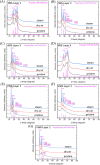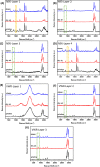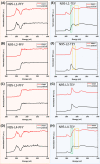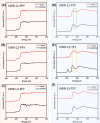Reusing Face Covering Masks: Probing the Impact of Heat Treatment
- PMID: 35855909
- PMCID: PMC9284677
- DOI: 10.1021/acssuschemeng.1c04530
Reusing Face Covering Masks: Probing the Impact of Heat Treatment
Abstract
The COVID-19 pandemic resulted in imminent shortages of personal protective equipment such as face masks. To address the shortage, new sterilization or decontamination procedures for masks are quickly being developed and employed. Dry heat and steam sterilization processes are easily scalable and allow treatment of large sample sizes, thus potentially presenting fast and efficient decontamination routes, which could significantly ease the rapidly increasing need for protective masks globally during a pandemic like COVID-19. In this study, a suite of structural and chemical characterization techniques, including scanning electron microscopy (SEM), contact angle, X-ray diffraction (XRD), X-ray photoelectron spectroscopy (XPS), and Raman were utilized to probe the heat treatment impact on commercially available 3M 8210 N95 Particulate Respirator and VWR Advanced Protection surgical mask. Unique to this study is the use of the synchrotron-based In situ and Operando Soft X-ray Spectroscopy (IOS) beamline (23-ID-2) housed at the National Synchrotron Light Source II at Brookhaven National Laboratory for near-edge X-ray absorption spectroscopy (NEXAFS).
© 2021 The Authors. Published by American Chemical Society.
Conflict of interest statement
The authors declare no competing financial interest.
Figures









References
-
- Zhao M.; Liao L.; Xiao W.; Yu X.; Wang H.; Wang Q.; Lin Y. L.; Kilinc-Balci F. S.; Price A.; Chu L.; Chu M. C.; Chu S.; Cui Y. Household Materials Selection for Homemade Cloth Face Coverings and Their Filtration Efficiency Enhancement with Triboelectric Charging. Nano Lett. 2020, 20, 5544–5552. 10.1021/acs.nanolett.0c02211. - DOI - PMC - PubMed
-
-
accessed April 17,
-
Grants and funding
LinkOut - more resources
Full Text Sources
